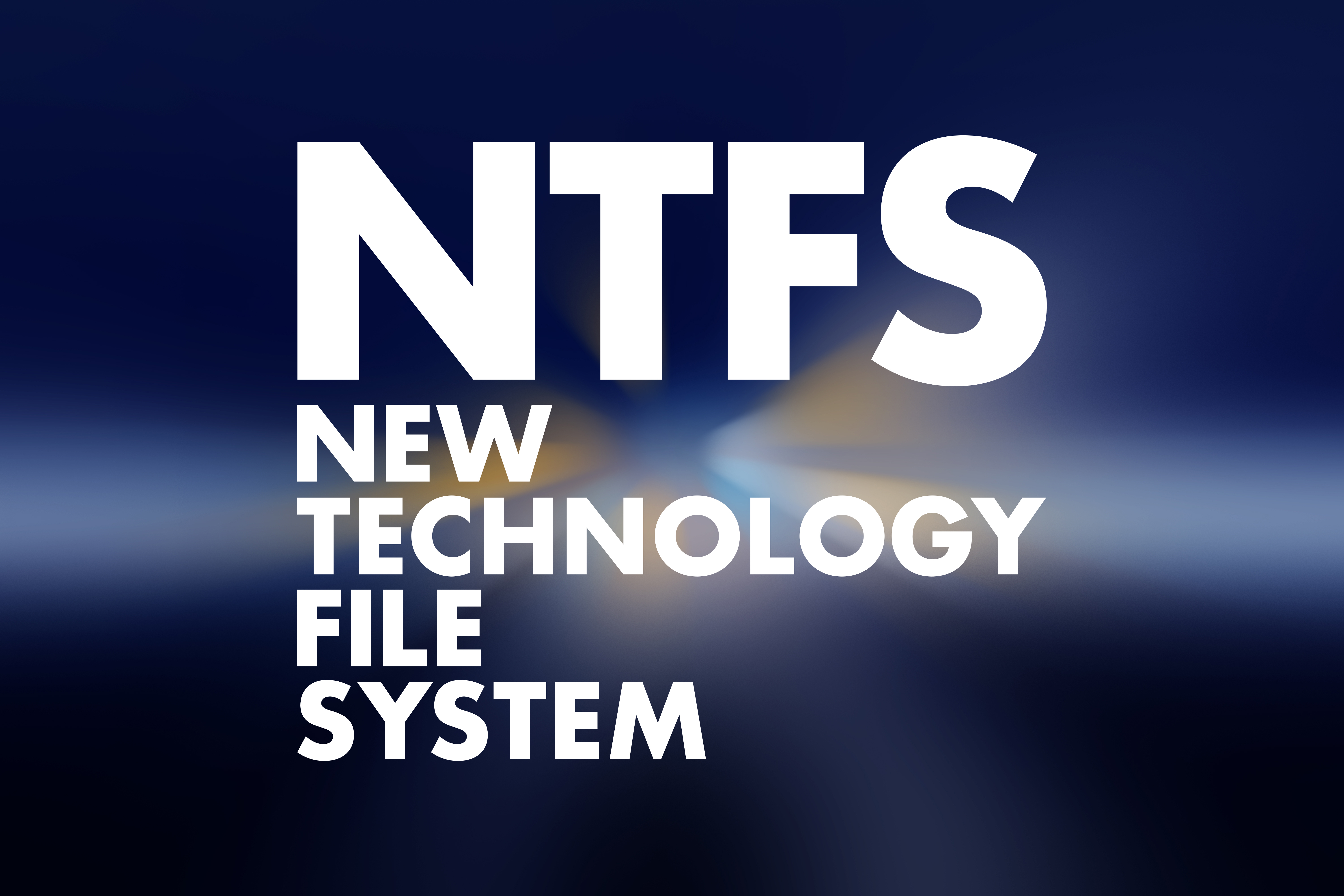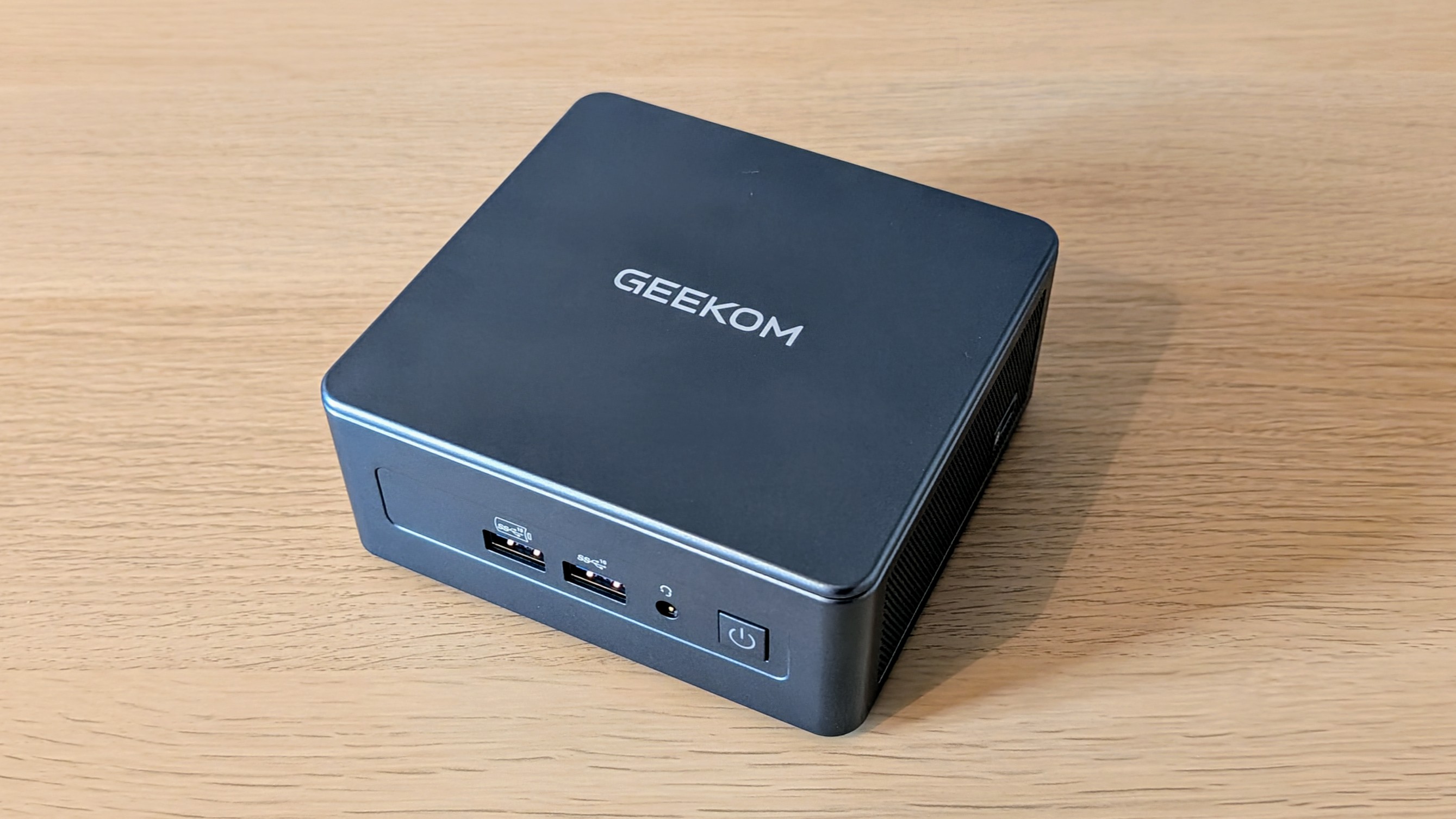What is NTFS?
All about the new technology file system by Microsoft

Imagine sorting through a towering pile of paperwork lacking any visible signs of order. An equally complicated affair ensues when a storage device lacks a file system.
When you access folders from an external drive, a file system determines its name, storage location, and access method. While this may seem simple at the outset, data is rendered useless without it.
File systems partition disk space into multiple logical regions, so users can organize their files into separate directories. Also stored on a file system are the file name, the file size, the position of the file in the folder hierarchy, date of creation, the most recent access, the most recent change to a file's metadata, and the last time it was backed up.
A file system does more than just keep records, though. In addition, a file system maintains memory, encrypts data, regulates access to files, and ensures data integrity.
The new technology file system (NTFS) is Microsoft’s proprietary file system first introduced with Windows NT 3.1 in 1993.
Superseding its predecessors — file allocation table (FAT) and high-performance file system (HPFS) — the NTFS file system features several improvements, including sparse file support, disk usage quotas, hard links, and file-level encryption.
Before we go over each enhancement in detail, let’s understand the inner workings of the NTFS file system.
Get the ITPro daily newsletter
Sign up today and you will receive a free copy of our Future Focus 2025 report - the leading guidance on AI, cybersecurity and other IT challenges as per 700+ senior executives
How does NTFS work?
The master file table (MFT) keeps track of all file, directory, and metafile data within the NTFS file system. Essentially, the MFT is an index of all files on an NTFS volume, containing information about the file name, its attributes, and the location of its subfolders.
Each file or folder has two access control lists (ACLs). The discretionary access control list (DACL) outlines what types of interactions users or groups of users may or may not engage in. In C:/Program Files, for instance, all users may read and execute all files, but only the administrator may modify them.
The second ACL, known as the system access control list (SACL), determines which interactions with the file or folder should be audited. For example, an audit of sensitive company files allows management to ascertain exactly when a user attempted to delete or copy files.
Additionally, the volume shadow copy service (VSS) preserves historical data on NTFS volumes by copying old, overwritten data to shadow copy via copy-on-write. The user may recover an earlier version upon request. On systems with high load, Microsoft recommends creating a shadow copy volume on a dedicated disk.
What’s new in NTFS?
Here’s a list of features that set NTFS apart from its predecessors.
1. Support for long file names
NTFS allows file names to contain up to 255 characters, as opposed to FAT32's 83-character maximum. Additionally, files names aren’t case-sensitive and may contain special characters, excluding ?, ", /, \, <, >, *, |, and :. A hard link feature allows different file names located in different directories to point to the same data.
2. Theoretically limitless file size
NTFS can store files as large as 16 exabytes — an exabyte is also 1,000 times larger than a petabyte, which is the equivalent of 1024 terabytes.
Additionally, NTFS can store volumes up to 8 petabytes on Windows Server 2019 and newer, more than double the capacity of older versions that could only handle volumes up to 256GB.
3. File compression
NTFS' compression algorithm can support a cluster size of up to 4KB. Each file in a drive, directory or directory tree can be compressed or decompressed individually.
Compression is most effective when a file has redundant content, can be accessed sequentially, and is not itself compressed.
4. Increased security
Data stored on NTFS volumes can be protected with BitLocker drive encryption. Starting with Windows Server 2012 R2 and Windows 8.1, BitLocker supports device encryption in 32-bit (x86)- and 64-bit (x64)-based operating systems with a trusted platform module (TPM) that supports Connected Standby power mode.
5. Sparse files
NTFS provides support for sparse files as a way to save disk space. Sparse files have a default data value of zero — unless configured otherwise. As a general rule, storage is only allocated when there’s an immediate need.
Here’s how it works. A sparse file's metadata points to empty data blocks. When NTFS reads the file, it converts those arbitrary blocks into "real blocks" containing null bytes. The OS can thus store large files, even when there is not enough space to store them.
For example, a 25GB application containing 3GB of files would require precisely 25GB of disk space. However, the total storage can be limited to 22GB when sparse files are used.
6. Disk quotas
Disk quotas allow system administrators to monitor and control disk space assigned to individual users. Since Windows Vista, Microsoft has made it easy to shrink or expand a disk partition. That said, shrinking a volume may require you to relocate or disable your page file, Windows Search index, and any shadow copy that System Restore uses.
Is NTFS universally supported?
NTFS is compatible with the following operating systems:
- Windows 10
- Windows 8
- Windows 7
- Windows Vista
- Windows XP
- Windows 2000
- Windows NT
Evidently, NTFS is predominantly a Windows-centric file system. By default, Mac OS can only read NTFS drives and not write to them. A few Linux distributions support writing to NTFS, but most do not.
When NTFS is not supported, but you need a larger file-size limit FAT32 offers (4GB), you can use an extensible file allocation table (exFAT) file system. Microsoft’s exFAT is compatible with Mac OS, ChromeOS, and many media devices, including TVs, digital cameras, solid-state drives (SSD), and more. In Linux, exFAT is supported via filesystem in userspace (FUSE) software interface.
How to format an external drive using NTFS?
In Windows, you can format an external drive, USB pen drive, or SD card using one of three file systems: NTFS, FAT32, or exFAT. To enable NTFS, use the following instructions:
1. Connect your device to the PC.
2. Navigate to “My Computer” (or This PC).
3. Right-click on the drive in question and select “Format” from the menu. A pop-up window should appear.
4. In the “Format” menu, click on “File System.” A drop-down should appear.
5. Select “NTFS” from the available options (NTFS, FAT32, exFAT).
6. Click “OK.”
Note: Formatting will erase all data from the disk. Make sure you have a backup before proceeding.
-
 Geekom Mini IT13 Review
Geekom Mini IT13 ReviewReviews It may only be a mild update for the Mini IT13, but a more potent CPU has made a good mini PC just that little bit better
By Alun Taylor
-
 Why AI researchers are turning to nature for inspiration
Why AI researchers are turning to nature for inspirationIn-depth From ant colonies to neural networks, researchers are looking to nature to build more efficient, adaptable, and resilient systems
By David Howell